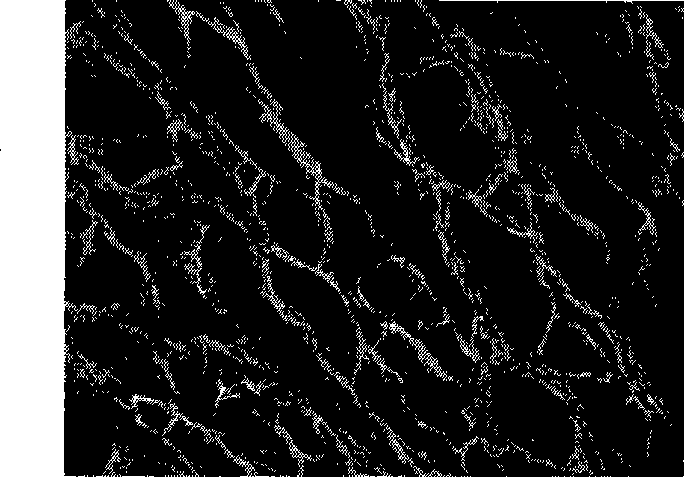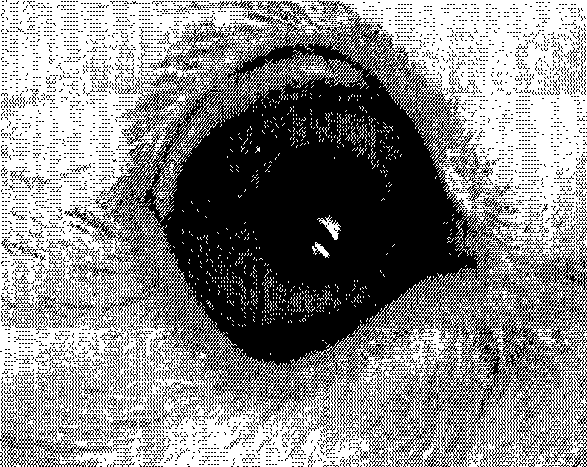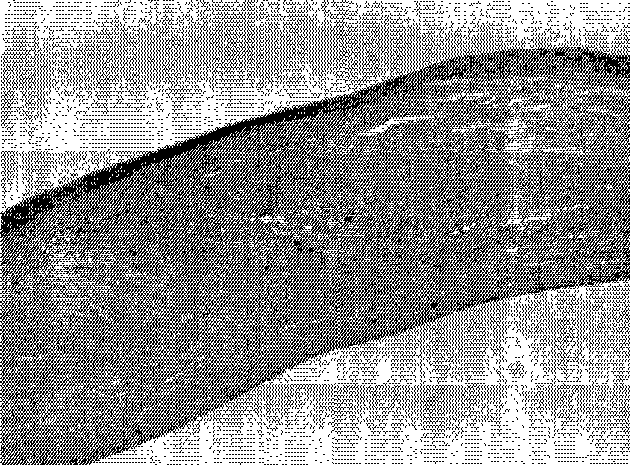Whole layer biological cornea as well as construction method and use thereof
A kind of cornea and biological technology, applied in the field of medical materials, can solve the problem of cornea not being ideal
- Summary
- Abstract
- Description
- Claims
- Application Information
AI Technical Summary
Problems solved by technology
Method used
Image
Examples
Embodiment 1
[0028] Example 1 Preparation and Biocompatibility of Porcine Corneal Acellular Matrix
[0029] Take fresh porcine cornea, mechanically remove the epithelial layer, tear off the elastic layer, soak in 1% TritonX-100, shake at 4°C for 72 hours to decellularize, then repeatedly shake and wash with PBS buffer, and the tissue is taken to remove the front lamellar layer And the back plate layer, keep the middle third of the thick matrix layer, freeze at -80°C overnight, and then transfer to vacuum drying for 24 hours. The acellular matrix was rehydrated in PBS buffer and serum-free DMEM medium before application, and stored at 4°C for future use. The prepared porcine corneal acellular matrix maintains the original basic shape and toughness of the cornea, and is edematous and translucent. Under the scanning electron microscope, the collagen fibers in the longitudinal section of the matrix layer are neatly arranged, wavy, dense, and the fibers can be seen in different sizes pores ...
Embodiment 2
[0032] Example 2 Isolation and Culture of Rabbit Corneal Epithelial, Stromal and Endothelial Cells
[0033] Rabbit corneas were taken aseptically, and the corneal epithelium and stroma were peeled off under a microscope, and the endothelial layer was torn off along Descemet's membrane. Tissue block planting method to cultivate primary corneal epithelial cells: after removing the superficial epithelial cells, cut the corneal limbus into 1mm×2mm tissue blocks, stick the epithelium side down on the bottom of the culture dish, dry in the incubator for half an hour, add a small amount of 10% The DMEM / F12 (1:1) medium of fetal bovine serum is better just submerging the tissue block, and the culture medium is added after overnight. The primary stromal cells were obtained by combined digestion and tissue block method: cut the stromal layer tissue block into pieces, put them in a centrifuge tube, add 3% type II collagenase for thermal digestion, and shake at 37°C for about 40 minute...
Embodiment 3
[0035] Example 3 Cultivation of three-dimensional corneal stroma in a bioreactor
[0036] First, the corneal stromal cells were transfected with green fluorescent protein (GFP), and the cells were fluorescently labeled. When the corneal stromal cells adhere to the wall and grow nearly 70% to 80% confluent, discard the culture medium, add fresh culture medium and GFP recombinant adenovirus solution at a ratio of 2:1 to the culture dish, and place at 37°C, 5% CO 2 Overnight in a saturated humidity incubator, discard the mixture the next day, wash twice with PBS buffer to remove residual virus particles, then add fresh serum-containing medium again, continue to culture for 24 hours, and observe the high expression of green fluorescence under a fluorescent microscope After that, it can be used to plant the corneal acellular matrix carrier.
[0037] GFP-labeled corneal stromal cells were digested and centrifuged to make a concentration of 2×10 6 / ml of cell suspension, injecte...
PUM
 Login to View More
Login to View More Abstract
Description
Claims
Application Information
 Login to View More
Login to View More - R&D
- Intellectual Property
- Life Sciences
- Materials
- Tech Scout
- Unparalleled Data Quality
- Higher Quality Content
- 60% Fewer Hallucinations
Browse by: Latest US Patents, China's latest patents, Technical Efficacy Thesaurus, Application Domain, Technology Topic, Popular Technical Reports.
© 2025 PatSnap. All rights reserved.Legal|Privacy policy|Modern Slavery Act Transparency Statement|Sitemap|About US| Contact US: help@patsnap.com



